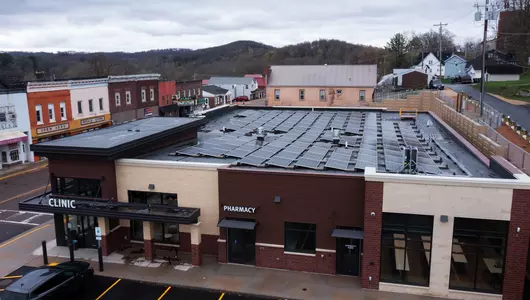
HVAC
Through examining and auditing our heating and cooling systems, we were able to make several cost- and energy-saving changes. One area in particular is our data center, which requires a high level of energy use and temperature control.
Energy-saving opportunities
We leverage energy-saving opportunities with our heating, ventilation and air conditioning (HVAC) systems to improve efficiency, reduce energy consumption and integrate renewable energy sources. This approach not only lowers operational costs but also enhances the overall sustainability of our facilities. By implementing smart technologies, we can monitor and adjust energy usage in real time, ensuring optimal performance and minimal waste.

HVAC systems
To improve efficiency and lower energy costs, we went through a retrocommissioning process that examined our heating and cooling systems. From there, we conducted an energy audit, and that opened our eyes to many energy-saving opportunities. Within one year we were able to improve energy efficiency by 25%, resulting in more than $1 million in annual savings.
Air handlers
Before any changes were made, we went through an energy audit that helped identify areas for improvement. This audit showed that our air handlers, which blow warm and cool air through our buildings, were running during times when neither staff nor patients were occupying a space. Our solution is to schedule our air handlers to run only when needed. Doing this in three of our buildings has led to a more than $78,000 reduction in energy costs.


Cooling
As we worked to find additional opportunities to reduce energy consumption, one area we looked to was our cooling system. We went through a process called chiller/tower optimization that allowed us to reprogram the electrical system controls that monitor the temperature in the building. By doing so, the fan in the cooling tower interacts with the chiller to ensure they both run as efficiently as possible. Once we saw the success of this in one building, it was expanded to all Gundersen campus buildings with chilled water systems.
Heating
In addition to our cooling systems, we took a close look at how we were using our boilers, and we found that we could enable reducing stations on our high-pressure boilers. This allows the steam from the “back-up” boiler to be sent through a valve that reduces the steam pressure so it can be used in areas serviced by low-pressure boilers. This strategy, paired with other fuel-saving technologies, has led to cost savings of $64,000 annually.

Data Center Design
When we embarked on moving our data center to a new location, it was important for us to develop a model that would improve energy usage as the equipment in the building has high energy needs. Our information technology (IT) and construction teams collaborated to develop a unique chimney design that prevents the mixing of hot and cold air.

News

Employee garden offers place to unwind, dig in the dirt

Gundersen Elroy Clinic reaches net zero status on energy use

Local partners launch 100% resilient and renewable energy healthcare campus project

Gundersen St. Joseph’s welcomes community to new Elroy Clinic
Send us your questions and ideas about environmental sustainability.